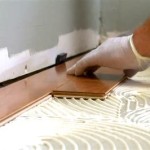Creating A Stunning Floor With The Right Direction
Are you looking to elevate the look and feel of your home with a stunning new floor? While the choice of flooring material is crucial, paying attention to the direction in which you install it is equally important. The right direction can not only enhance the aesthetics but also impact the functionality and durability of your floor.
In this article, we delve into the essential aspects of determining the right direction for your flooring, ensuring that your new floor is both visually appealing and long-lasting.
Factors to Consider
When selecting the direction of your flooring, several factors come into play:
- Room shape and size: The shape and size of the room can influence the perceived direction of the floor. Installing planks or tiles in a particular direction can make a narrow room appear wider or create the illusion of a larger space.
- Lighting: Natural and artificial lighting can affect how the floor appears. Installing flooring planks or tiles perpendicular to the main light source can create a sense of depth and elongation.
- Traffic flow: Consider the primary traffic patterns within the room. Installing flooring in a direction that follows the flow can reduce wear and tear, extending the life of your floor.
- Existing features: If your room has architectural features such as fireplaces, built-in shelves, or bay windows, aligning the flooring with these elements can create a cohesive and harmonious look.
- Personal preference: Ultimately, the choice of flooring direction is a matter of personal preference. Consider the overall style you want to achieve and how the direction will complement the room's decor.
Recommended Directions for Different Flooring Materials
Depending on the type of flooring material you choose, specific installation directions may be recommended:
- Hardwood: Hardwood planks should typically be installed parallel to the longest wall in the room. This direction creates a sense of flow and elongation.
- Laminate: Laminate planks can be installed in any direction, but installing them perpendicular to the main light source can enhance their visual appeal.
- Tile: Tile can be installed in various patterns and directions. Straight-set patterns align tiles in parallel rows, while diagonal patterns create a more dynamic look.
- Vinyl: Vinyl planks and tiles offer flexibility in installation direction. They can be installed parallel or perpendicular to the longest wall or in a diagonal or herringbone pattern.
Additional Tips
Here are some additional tips for creating a stunning floor with the right direction:
- Get professional advice: If you're unsure about the best direction for your flooring, consult with a professional flooring installer.
- Use a level and chalk line: Ensure the first row of flooring is perfectly straight and use a chalk line to guide the installation of subsequent rows.
- Stagger the joints: To create a more stable and durable floor, stagger the joints between planks or tiles.
- Protect your floor: Use felt pads under furniture legs and rugs to prevent scratches and dents.
By carefully considering the factors discussed in this article, you can determine the right direction for your flooring, creating a stunning and functional floor that will enhance the beauty and value of your home for years to come.

Which Direction To Lay Your Hardwood Flooring Riterug

Which Direction To Lay Your Hardwood Flooring Riterug

Which Direction To Lay Your Hardwood Flooring Riterug

Which Direction To Lay Your Hardwood Flooring Riterug

Which Direction To Lay Your Hardwood Flooring Riterug

Which Direction To Lay Your Hardwood Flooring Riterug

Which Direction To Lay Your Hardwood Flooring Riterug

110 Stylish And Cool Floor Transition Ideas Digsdigs

How To Read A Floor Plan And Design The Perfect Home For You

How To Pair Your Rug And Flooring Ruggable Blog
See Also







